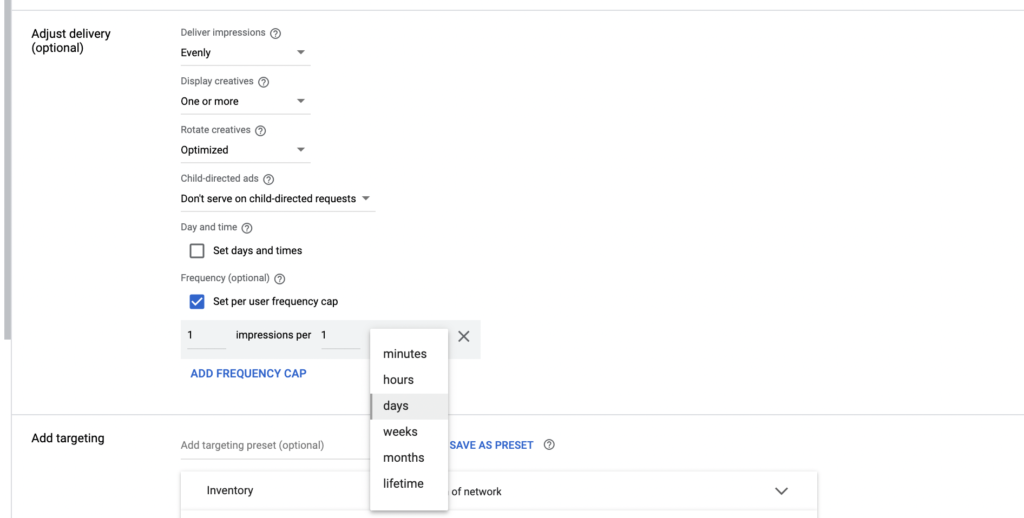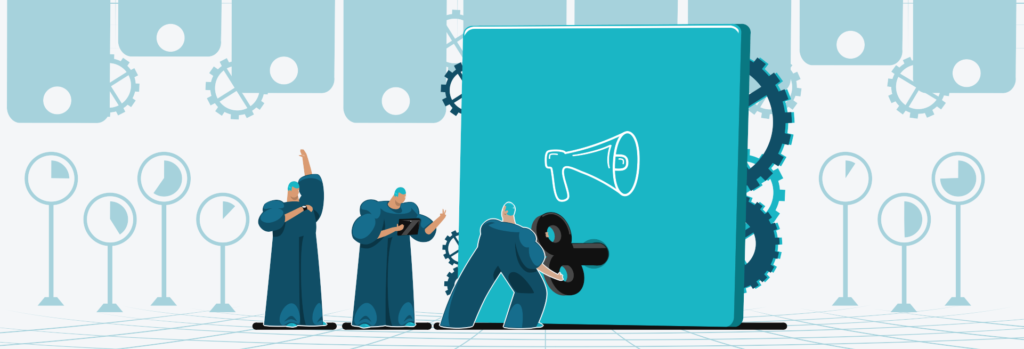What is Frequency Capping in Advertising and Why is it Important?
Frequency capping is the practice of setting a limit on the number of times a particular advertisement is shown to an individual user within a specified time period. It helps control the frequency with which an ad is displayed to prevent it from becoming repetitive or annoying to the user.
Frequency capping is mostly an advertiser’s concept, however, it’s also important for publishers. Finding the optimal frequency limit will determine if ads will receive the right amount of spotlight.
What is Frequency Capping?
Frequency capping is a feature that limits the number of times an ad will be exposed to the same user.
For display ads, frequency capping limits the number of impressions for an individual user to have on the campaign per day, week, or month.
For video ads, frequency capping limits the number of impressions and/or views on the video ad per day, week, month, or all of the above.
The main goal of the frequency capping is to avoid showing the same ad to the user too many times. If the same ad is frequently served for the same user, it is perceived as intrusive and reduces the campaign’s CTR.
Why is Frequency Capping Important?
Frequency capping helps advertisers customize the ad viewability of their ads and spend their ad budgets more effectively by ensuring ads reach the right target audience and aren’t ignored. Frequency capping also ensures a better user experience, because users aren’t exposed to the same ad over and over again.
Therefore, frequency capping doesn’t only benefit advertisers, but is also in the best interests of publishers, especially if they run direct campaigns. Because the wider the capping is, the more ad impressions the publisher will receive.
Who sets frequency capping for ad campaigns?
- If there is a direct deal between the publisher and advertiser, frequency capping is negotiated in the Insertion Order (IO).
- If this is a programmatic deal, advertisers are usually the ones who set the frequency cap via DSPs such as Xandr, Adform, Eskimi, Google DV360, and others. Sometimes, even ad platforms provide a service of setting automated frequency capping.
When it comes to specific ad formats, like interstitial ads, neither advertisers nor publishers have control over setting frequency capping because it’s set by default. For interstitial ads, Google sets a frequency cap of 1 interstitial ad per one user in an hour.
If you have a Google Ad Manager account, you can set frequency capping for direct campaigns by yourself–per week, day, month, lifetime, etc. Frequency capping is also used for programmatic deals but not for Open RTB.

How is frequency capping applied for programmatic campaigns?
Frequency capping management is automated most of the time. Although advertisers mostly set it, oftentimes publishers or their monetization platforms can set it as well, for example for direct campaigns like preferred deals.

Why do publishers see the same ad on different ad placements?
The answer is quite simple. The advertiser runs the wrong frequency capping or hasn’t set any capping for the publisher’s site. This, however, brings more yield for the publisher because the advertiser is spending more money to display ads on the site.
Setupad experts say that good frequency capping is between 1-2 ads per minute.
Frequency Capping Best Practices
There is no golden standard for frequency capping. Low frequency might not deliver the intended results, while high ad frequency can result in overexposure, negatively impacting advertisers’ brands and resulting in low CTRs.
The ideal setup depends on the advertiser’s goals and the campaign type:
- For retargeting campaigns
Retargeting campaigns usually come with two types of goals:
- Re-engage page’s visitors by targeting them with relevant products/services
- Increase ad campaign’s conversion rate
Advertisers are usually willing to pay higher CPMs for such campaigns, so a frequency cap is essential since budgets need to be optimized.
For example, it could be optimal to have 8 impressions per day + a combination of 4 impressions per user in one hour. Sometimes, the first few impressions can be delivered for a higher CPM price, while the next ones for a lower, thus increasing the total amount of ad impressions.
- Brand awareness campaigns
Brand awareness campaigns can afford to have a high-frequency cap (for example, 30 impressions per campaign, 12 per day, and 8 per hour) per user, and sometimes there is no limit per campaign, just per day. The main goal is to gain brand recognition fast across the chosen target audiences.
Just, so you know 30 impressions per campaign are not that many because the average user sees between 6,000 to 10,000 ads every single day.
Extensive visibility equals better brand recognition on the site and new potential customers. The general costs of brand awareness campaigns are higher because of lower CTRs and immediate conversions, so you as a publisher can earn more from these direct campaigns.
- Displaying premium quality banners
Many consumers experience banner blindness, so the ads you serve must be high-quality and memorable, and users are willing to click on them. Usually, it means setting a frequency cap–1 impression per user in one hour or up to 3 impressions per day.
Conclusion
If you have direct campaigns or programmatic deals, make sure that you can successfully monitor the performance of ads served and get the best possible result by adding a frequency cap.
Just so you know, you won’t find one formula for ad frequency that will suit all served campaigns. Analyzing the previous campaign’s results and careful evaluation of current campaigns will give you a clear perspective of the frequency.


